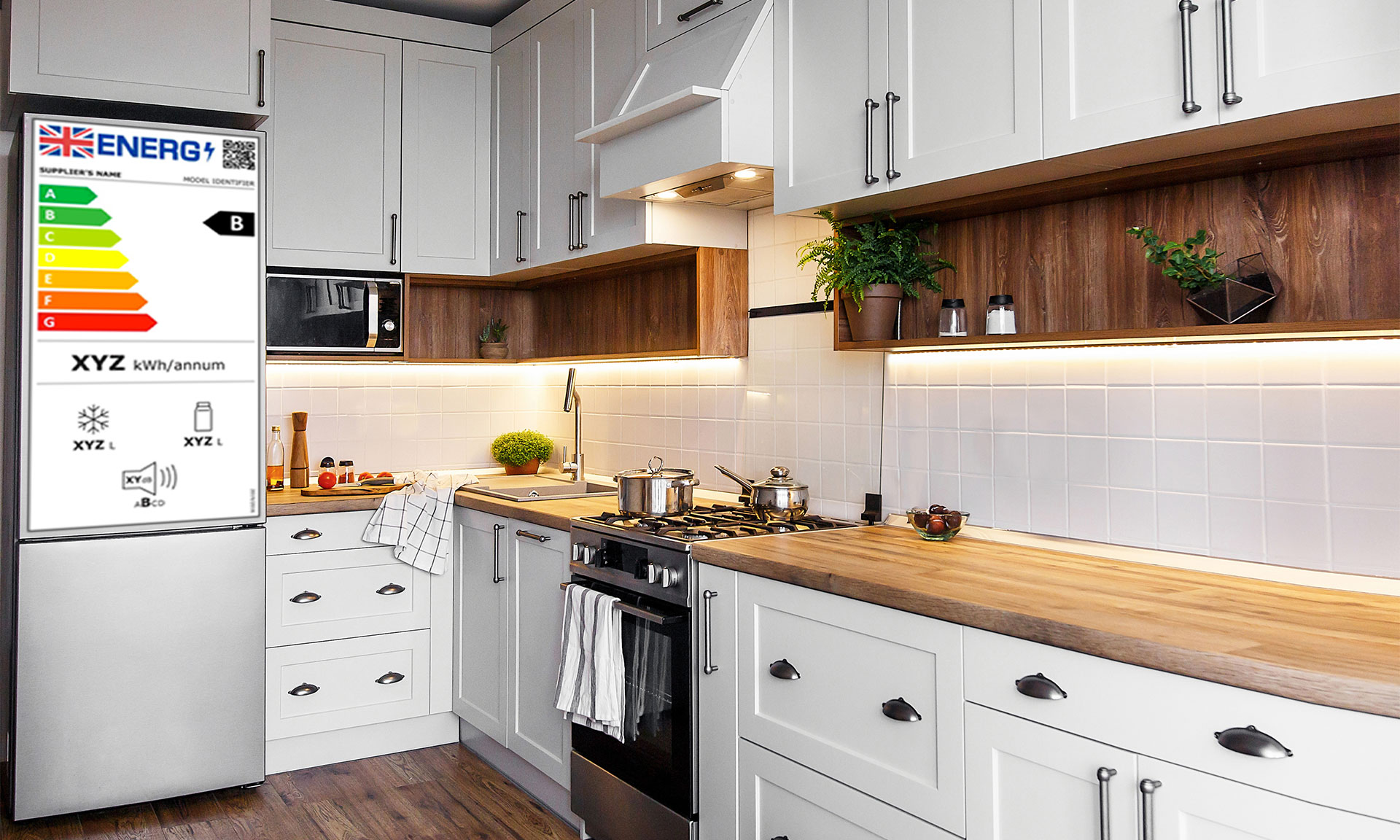[ad_1]
If you’ve been shopping for a new refrigerator recently, you may be wondering where all the A-rated ones have gone?
Previously, shops were awash with appliances with energy efficiency ratings of A+, A++ and even A+++, and now there are barely any.
Read on to find out why, or head straight to our fridge freezer reviews.
Energy efficiency rating changes explained
On 1 March 2021 a new energy label came into effect, showcasing a new energy efficiency rating system as well as additional points of information.
The key change to the energy efficiency rating system was the removal of the A+, A++ and A+++ ratings, which came into use in 2010/11.
The familiar colour scale remains, but a simpler A to G ranking system will be used instead.
You should find fridges and fridge freezers that previously had the most efficient A+++ rating are now rated D.
Looking for a new fridge freezer? See all of our Best Buy fridge freezers to find the right one for you.
Why was the energy rating system changed?
The energy efficiency of modern refrigerators has improved hugely, compared with those made five to 10 years ago. But within the old energy rating system there was no room to reflect this improvement, so a change was needed.
Under the previous system, half of the products on the market were labelled A++ and A+++.
As a result, it was difficult for consumers to judge the difference between A+ and A+++. Choosing a genuinely energy-efficient appliance had become confusing.
The new rating system should make it clearer exactly what you’re getting for your money.
The hope is that the change will also reinvigorate the sustainability race for manufacturers by completely emptying the top A-rating to leave room for improvement.
Find our more: What does the new energy label mean for you and your home?
So what rating should I be looking for if I want to buy a decent fridge freezer?

The new energy rating system is now more accurate and has created greater separation between products.
This means that different products that were previously rated A+++ may now have different energy ratings to each other.
Most of the refrigerators previously rated A+++ are now D on the new scale.
Picking a fridge freezer with an energy-efficiency rating halfway down the scale is likely to feel odd. Right now, though, buying a model in at least the D class is a good starting point for landing an energy-efficient appliance.
Remember, the standard needed to achieve an A, B or C rating is now higher, and very few manufacturers are yet producing models meeting those improved standards. This might remain the case for a while.
A spread of newly released models already have a C rating, but so far we know of only two fridge freezers that have achieved an A rating under the new system.
The A-rated LG GBB92MCBAP fridge freezer is currently being tested in our lab, so keep an eye out for our full review coming soon. The Samsung RL38A776ASR fridge freezer will be heading to the lab soon.
Looking for a fridge freezer that’s cheap to run? See our pick of the best energy efficient fridge freezers.
What other useful information is on the new energy label?

As well as the energy-efficiency rating, you’ll find additional information on the new label.
QR-code for more product information
Hover the camera on a smartphone over the QR code in the top right-hand corner of the energy label and it will take you to the specific product page on the European Product Database for Energy Labelling (EPREL). There you’ll be able to find more detailed information on the appliance.
The database provides information such as the model dimensions, the type of compartments and their individual volume, or the minimum guarantee offered by the supplier.
Energy consumption
This is presented as kWh per year on refrigeration appliances.
Volumes
The label will show you the sum total volume in litres of all the frozen and chilled compartments.
Noise
Noise emissions are expressed in decibels (dB(A) re 1 PW), and you will also see the noise emission class the appliance is in.
Find an appliance with low running costs with our pick of energy efficient fridges and energy efficient freezers.
How Which? tests fridge freezers for energy efficiency
We measure how much energy each fridge freezer uses to keep cool over 24 hours, as well as how much it uses to chill and freeze fresh food. We then calculate what this is likely to add to your energy bill.
To see whether a fridge freezer is cheap to run for its size, we also rate its energy use against the amount of usable storage space it offers.
You’ll find our estimate of the annual running costs in the Tech Specs section for each fridge freezer review.
Eco Buy fridges and fridge freezers

We’ve recently rolled out the Which? Eco Buy logo for fridges and fridge freezers.
This is given to the products that will have the smallest environmental impact while still doing their job well.
To become an Eco Buy, a fridge or fridge freezer must have:
- A total test score of at least 70%
- Five stars for energy efficiency
- Four stars and above for cooling and freezing power
- Its brand must get a good longevity rating in our annual consumer surveys
You can filter for Eco Buys on our fridge and fridge freezer reviews pages.
[ad_2]
Source link


Leave a Reply